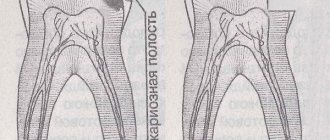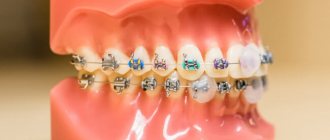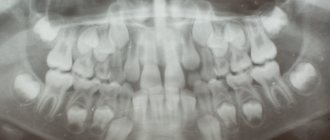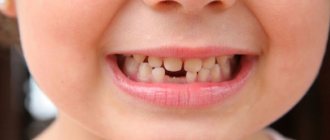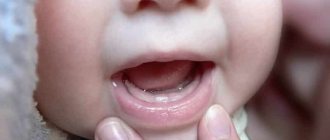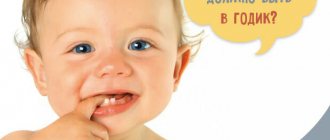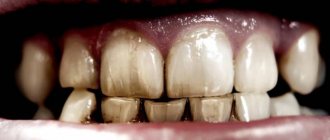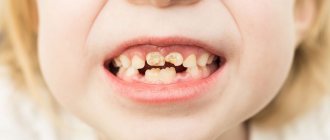Bruxism is a subtle pathology of involuntary contraction of smooth muscles responsible for the chewing reflex, which causes characteristic teeth grinding. This unpleasant syndrome usually manifests itself in a person during the period of night rest, although cases of daytime attacks are occasionally diagnosed.
Scientists have not yet identified the exact mechanisms of the formation of bruxism , although certain negative factors provoking the occurrence of pathology were nevertheless identified in the process of analyzing medical statistics for all known cases of the disease. What are the reasons why adults grind their teeth in their sleep, how to fight it, and is it possible to reduce the risks of bruxism? You can read about this below.
Causes of teeth grinding during sleep in adults
Grinding of teeth during sleep in adults was known hundreds of years ago. Due to the lack of proper level of medicine, this phenomenon was associated with possession by spirits, the presence of worms and other unconfirmed theories. Thanks to modern technologies and new diagnostic methods, doctors were able to qualitatively and quantitatively assess the pathological trends that contribute to the formation of the syndrome.
The most well-known indirect causes of bruxism are usually:
- Mental and neurological disorders . Severe stress and depression, epilepsy, tremors of the limbs, enuresis and other diseases, pathologies and syndromes of this spectrum;
- Systemic sleep disorders . This usually includes OSAS syndrome, somnambulism and other pathologies described above;
- Substance and drug abuse . Alcohol, caffeine, sleeping pills, antidepressants, psychotropic substances and drugs can be a “trigger” for the onset of bruxism;
- Pathologies of teeth and jaw . A number of defects in the structure and functioning of the dental system can contribute to the development of the above syndrome;
- Problems of the osteopathic spectrum . Birth injuries, osteochondrosis, disorders of the musculoskeletal system;
- Gastrological pathologies . In most cases, bruxism can be potentiated by gastroesophageal reflux disease;
- Direct injuries . These include traumatic brain and facial injuries;
- Pathologies of the respiratory system . Severe curvature of the nasal septum, prolonged chronic sinusitis and rhinitis can contribute to the development of bruxism;
- Other diseases and syndromes . A wide range of serious chronic diseases, Parkinson's disease, Huntington's chorea, and other pathologies.
Causes
There is no exact answer to why a person grinds his teeth. Different categories of specialists have their own opinions on the development of bruxism. Even in its manifestation, teeth grinding can change its character - be episodic or last constantly.
Regardless of the cause, teeth grinding has a detrimental effect on the condition of the teeth, jaws, joints, tissues and surrounding muscles.
There are many factors for the development of pathology, but the most important is the psychological or psycho-emotional background.
According to psychologists
Long-term reactions of the body, expressed in anger, grief, sadness or fear. All these conditions gradually contribute to the development of neurosis, depression or a stressful situation. Constant negative emotions, associated with increased excitability or aggression, can also play a big role.
Constant overexertion, leading to stiffness of the jaw, facial muscles and teeth. During the daytime, this can be controlled by forcing yourself to relax. But at night, nerve impulses are transmitted with the same force as the central nervous system is excited.
Teeth grinding under stress occurs periodically. This becomes a signal that changes in the environment are already occurring in the body. The neurosis is characterized by frequent and painful grinding at night.
According to somnologists
Bruxism is often a consequence of sleep disturbance. The person experiences excessively deep or restless sleep, nightmares, sleepwalking, or apnea. Nervous disorders affect night's rest. A person does not relax in front of him, he remains tense. And during sleep, the jaws become clenched, which causes creaking when moving.
According to neurologists
Grinding of teeth signals a significant disturbance in the nervous system. This may be caused by epilepsy or a predisposition to it. There are often cases where people begin to grind their teeth after accidents with TBI. Deviations in the functioning of the jaw muscles begin after damage to the trigeminal nerve and its neurons.
According to dentists
Incorrect bite, violation of prosthetic technology or installation of braces. A slight deviation in dental surgery can cause teeth grinding at night. Bruxism often occurs after tooth restoration with a filling.
Other factors:
- Complications during childbirth (the baby will suffer from bruxism from birth)
- Osteochondrosis of the cervical vertebrae;
- Parasites (during intoxication, a deficiency of vitamins occurs in the body, affecting mental stability);
- Brain injuries, tumors;
- Genetic predisposition;
- Bad habits;
- Use and abrupt cessation of antidepressants or sleeping pills.
Symptoms and manifestations of bruxism
The main symptomatic manifestation of bruxism in adults is teeth grinding during sleep, caused by involuntary contraction of the masticatory muscles. On average, an attack lasts only 5-10 seconds, but can be repeated up to two dozen times during the night . During a night's rest, a person does not feel the influence of pathology, so for the first time he learns about its existence from loved ones, relatives, and acquaintances.
Along with the main characteristic manifestation, a person may experience the following symptoms::
- Morning headaches and migraines;
- Irregular dizziness;
- Jaw pain;
- Tinnitus;
- High eye sensitivity to bright stimuli;
- Drowsiness and fatigue that accompanies a person throughout the day.
If attacks of bruxism occur regularly over a long period of time, then the following symptoms may appear:
- General malaise and exhaustion of the body, poor appetite;
- Systemic stress and depression, insomnia, multiple sleep disorders;
- Moderate or severe pain in the ears, temporal lobes, paranasal sinuses, neck, shoulders, back, jaw joints.
Snoring spell
From the letter:
“Please recommend something for snoring.”
Another letter on the same topic:
“I wouldn’t like to take up a lot of your time, so I’ll try to talk about the current situation as briefly as possible. I'm only twenty-six years old, but I have a terrible problem (at least I think it's a woman's problem). The fact is that I snore terribly, just like a healthy man. I always feel awkward when I stay overnight at a party or travel on a train. Help me please".
Read a special spell over water or milk, which you drink before bed. The spell words are:
The fish does not toss around in the water, does not bite with its teeth, does not squeak with its jaw, and does not snore during the nights or days. Just as a fish is silent, so the servant of God (name) is silent. In the name of the Father and the Son and the Holy Spirit. Amen.
Dangerous consequences of bruxism and lack of treatment
Bruxism is not as harmless as it seems and can cause a number of complications and additional pathologies in the patient.
In the medium term, regular bruxism may cause the following problems::
- Persistent sleep disturbances with the development of OSAS syndrome;
- Injury to tooth enamel with the formation of chips and cracks;
- Formation of wedge-shaped defects, dental hypertension, and less commonly, crown fractures;
- Constant pain in the jaw area, both muscular and articular in nature;
- The formation of periodontitis due to mechanical injuries to the soft tissues of the mouth;
- Loss of individual teeth or part of the dentition.
If bruxism is too prolonged, which continues in the patient for more than six months, the following complications may develop :
- Masticatory muscle hypertrophy syndrome;
- Musculo-articular dysfunction of the TMJ;
- Chronic gingivitis;
- Persistent severe constant pain in adjacent areas - temporal lobes, neck, shoulders, back;
- Structural dystrophy of the tongue.
Spells for tummy pain in a baby
Magic conspiracy No. 1
The ritual is performed any time the baby is bothered by abdominal pain. The person speaking crosses the baby’s tummy 3 times, then puts his palm on it and says the following words:
“I baptize God’s servant (name) with the cross, I want to relieve the pain in my tummy. Go to the little field, to your pure will, and don’t touch or disturb the baby (name). Forever and ever. Amen".
After the conspiracy, you again need to cross your tummy 3 times.
A spell that your mother or grandmother reads will definitely help
Magic plot No. 2
This plot, like the previous one, is done when a baby has a tummy ache. The speaker must take the icon of the Most Holy Theotokos, cross the child with it 3 times, then pronounce the spell words, applying the icon to the sore stomach:
“Most Holy Mary, mother of Jesus Christ, our God, you gave birth to your son, rocked him in a cradle, protected him from all pain. Place your hand on the tummy of God's baby servant (name) so that the pain disappears, goes away forever. Forever and ever. Amen".
Daytime and nighttime bruxism
In various medical literature there are diametrically opposed opinions about the extent of the spread of bruxism in the world. Some publications claim that up to 40 percent of the entire population of the planet suffers from involuntary contraction of the chewing muscles. More often than not, these numbers are far-fetched and do not reflect the real overall clinical picture.
Modern domestic medical statistics show that, on average, about 3 percent of the population of the Russian Federation suffers from bruxism, while 3 out of 4 patients experience attacks at night and only a quarter during the day.
The patient himself cannot track nocturnal bruxism
During the day, bruxism is also expressed in involuntary grinding of teeth, but it does not manifest itself in the resting stage, but under strong psycho-emotional stress. The patient cannot stop this pathology by force of will, but at the same time he fixes the problem visually and tactilely, which allows him to seek medical help from a specialized specialist as quickly as possible.
Types of pathology
A person can grind their teeth during the day or at night, so there are two forms of the disease - nocturnal and daytime. There are tapping, grinding sounds, breathing rate, pulse, and pressure may change. Symptoms occur constantly, several times a night or from time to time - for example, once a week. During the day, the course of the pathology will depend on the patient’s self-control - if he monitors the teeth, their position, and the functioning of the temporomandibular joint, he will be able to reduce negative manifestations to a minimum.
How to stop grinding your teeth in your sleep
Treatment of bruxism is a long-term complex process that includes suppressing the symptoms of the problem, eliminating the causes of the pathology, combating possible complications and other effective measures if necessary. Classic actions :
- Using a mouth guard . A special device made from food-grade plastic, silicone or rubber can be used immediately before bedtime. The device is placed in the mouth, prevents teeth from rubbing against each other, and also partially blocks the formation of involuntary muscle contractions in the problem area. Mouthguards are most often made individually based on a brux checker removed from the teeth and jaw;
- Dental activities . The wide range of services offered by a professional dentist to counteract bruxism includes the use of dental implants, elimination of malocclusion, selective grinding of individual teeth and parts of a row, elimination of other dental and jaw problems in cases where they act as a provoking link in the development of the syndrome;
- Restoring the functionality of the spine with therapy of the paravertebral muscles in case of problems with the musculoskeletal system and the formation of complications due to bruxism;
- Taking medications . If the disease causing bruxism is clearly identified, appropriate drug therapy is prescribed (for example, anticonvulsants for epilepsy). Supplement it with taking multivitamin and mineral complexes;
- Psychotherapy . Regular psychotherapy sessions are highly effective as a tool for combating involuntary contraction of the masticatory muscles, allowing one to develop the necessary control and relaxation skills. Hypnosis and acupuncture are also used as alternative adjuncts;
- Home relaxation . Classic activities aimed at relaxation and stress relief are walks in the fresh air, a warm bath before bed, massage, etc.
Treatment
The main task in the fight against bruxism is to eliminate the causes of teeth grinding. In most cases, complex therapy is required.
- First of all, it is necessary to eliminate the hypertonicity of the masticatory muscles. For this purpose, special mouthguards made from dental impressions are used. Put them on before going to bed. The treatment period can last up to a year. This time is necessary for the muscles to get used to their natural state.
USEFUL INFORMATION: How to get rid of fatigue and sleepiness during the day
- If the reasons lie in the dental field, it is necessary to correct the bite, replace unsuccessful fillings in the teeth, and crowns.
- In cases where the grinding is caused by psychological difficulties, the help of a psychologist is required.
- Suitable sedatives are often prescribed, ranging from herbal tea to sedative tablets, as well as calcium, magnesium, and B vitamins.
- As a folk remedy, rinsing with chamomile decoction is used. If there are ulcers on the mucous membrane, you can use sage: it quickly heals such wounds.
- It is important to properly relax your muscles. There are a number of special exercises for this. You can do self-massage, apply a wet compress to the lower jaw.
- You need to adjust your diet. It is better to give up hard foods and pay attention to the body’s water balance.
- To restore enamel, select a suitable toothpaste.
- In particularly difficult cases, Botox injections are made into the jaw muscles, so that they can no longer contract involuntarily.
Folk remedies for grinding teeth in sleep
The main methods of traditional medicine in this aspect are aimed at relaxation and calm. The use of any of the following prescriptions must be discussed with your doctor.
- Green tea and chamomile . This collection is sold in almost any pharmacy, and already in a packaged state. It is brewed like regular tea and drunk 30 minutes before going to bed;
- Milk and turmeric . Take a glass of milk, heat the liquid and when it boils, add 1 teaspoon of turmeric, then dissolve it completely (the product will acquire a mustard tint). Add 1 tablespoon of honey to the mixture, which is also thoroughly stirred. The drug is drunk 30 minutes before expected sleep;
- Compress . Soak a terry towel in hot water, squeeze out the liquid, and wrap the towel tightly around your jaw. Keep the compress until it cools, apply twice a day - morning and evening.
How to protect a baby from damage
Magic conspiracy No. 1
The spell against the evil eye must be done at dawn. To protect the baby from the evil eye, you should take 3 small gray stones, water and 3 spoons.
Then pour some water into the plate so that it flows by spoonfuls. You need to wash your baby with this water: wet the chest, crown, and then give him a sip to drink. After the procedure, go outside, pour out the remaining water and say 3 times:
“It came from the forest, go there, it came with the wind, it came to the wind and go away, it came from the people, it came to the people and go away.”
Magic plot No. 2
While bathing in the bathroom say:
“Grandmother Solomonida hovered, washed, and spoke conspiracies - from one they lived into another, into a single vein. So that no lessons, no supervision, and no slander will bother you. It didn’t take its own thought, and it didn’t take its own – not the lingual and not the ear, not the spot and not the heel, not the plantar and not the infraplantar. Amen".
Ancient methods that have not lost their relevance today
Prevention of bruxism
The basic preventive measures presented below will help reduce the risks of bruxism, regardless of the person’s age.
- Rejection of bad habits . Alcohol, drugs and smoking should be excluded from daily life;
- Normalization of rest and wakefulness . Go to bed at the same time, rest at least 8 hours at night. During the day, periodically engage in moderate physical activity; before bed, only light walks are recommended;
- Relaxation and calm . Stress and depression, as well as strong negative emotions, are the main “trigger” of bruxism. Try not to get into conflicts, enjoy life more, and don’t watch movies and scary TV shows at night. Do yoga, take warm baths before bed, master self-massage techniques;
- Monitoring and treatment . Visit doctors regularly and for the purpose of prevention, do not forget to treat diseases, especially those of the chronic spectrum.
Studying the effect of Coca-Cola drink on the condition of human teeth
Everyone knows that teeth need care and that they need to be protected, so we brush them morning and evening.
Why does this need to be done every day? As doctors and adults say, what we eat and drink affects the condition of our teeth. My parents buy me Coca-Cola , which I love, very rarely. They say this drink is bad for my teeth and causes tooth decay. And all people drink water every day. Why are some drinks healthy, while others are dangerous for tooth enamel?
According to the manufacturers of Coca-Cola , the substances included in soft drinks have minimal impact on the teeth, since they are in dissolved form and therefore pass through the oral cavity very quickly. And in one of the television programs I heard that if you put a baby tooth in Coca-Cola , it will completely dissolve within a month.
I decided to find out if this is true, and why you can drink water every day, but this drink cannot.
The purpose of the scientific work: to observe the effect of the Coca-Cola drink on tooth enamel.
Tasks:
- find out the number of students in the class who often drink this drink;
- study the composition;
- measure the acidity level of Coca-Cola ;
- conduct an experiment to study the effect of the drink on teeth;
- record the effect of the drink on tooth enamel.
Relevance of the topic: a person should consume quality products, and this is the key to his health, so the topic of my research is relevant.
Chapter 1 Object and research methods
In order to conduct this experiment, you need:
- baby tooth;
- Coca-Cola drink ;
- plain water;
- observation microscope;
- digital laboratory MultiLab;
- camera to record changes.
Methods:
- social poll;
- working with an information source;
- observation, photo – recording;
- analysis and synthesis of information.
Chapter 2Structure of the human tooth
Have you ever wondered how a human tooth works? If we look from the outside, we see that the tooth consists of a hard and tough substance. But this is not so, the diagram below shows that in fact a tooth is a whole, interconnected system of tissues.
Enamel is the white, tough tissue that covers the surface of the tooth. Enamel is made up of 95% minerals and is the hardest part of the human body. The great hardness of the enamel and high resistance to stress ensure that the enamel performs the functions of a chewing instrument, and also protects our teeth from external irritants and pathogenic bacteria.
Gums are the tissue that covers the bone that surrounds our teeth. It is necessary to constantly maintain your gums in a healthy condition, otherwise poor gum care can lead to disastrous results. Gum disease can destroy tooth roots and also cause bone loss.
Dental bone (dentin)
Dentin forms the basis of the tooth. This is a tough tissue located between the enamel and the root of the tooth.
Annex 1
The pulp is a soft tissue containing blood vessels, nerves and connective tissue. The pulp provides nutrition to the tooth during its growth and development.
A root canal is a cavity inside a tooth containing pulp tissue.
Supporting ligaments surround the root of the tooth and hold our teeth in the sockets of the jawbones.
The roots of the teeth are securely anchored by bone . Good teeth keep bones healthy and vice versa.
The root is the part of the tooth that is located under the gums. The root of a tooth is usually twice as long as the crown.
Chapter 3 Composition of Coca-Cola
The product that gave the world its most popular flavor was created in Atlanta, Georgia on May 8, 1886. Dr. John Pemberton, a local pharmacist, made Coca-Cola .
Then he brought a jug of the new product to the nearby Jacobs Pharmacy, where it was tried, rated "excellent" and began to be sold as a soda drink.
Dr. Pemberton did not even imagine the potential of the drink he created, which over time was destined to become one of the most popular in the world.
Although the list of ingredients is on the labels of the Coca-Cola : water, sugar, carbon dioxide, caffeine, coca extract, emulsifiers and flavoring agents, the formula of the classic Coca-Cola drink has been one of the company's best-kept secrets for 121 years. There are legends about its protection, for example, that the formula is in a bank safe, which can only be opened by decision of the company’s board with three keys at the same time.
Only recently the composition of this drink was published: sugar (10.58% of the volume of water), phosphoric acid (0.544 g/l), caffeine (150 mg/l), caramel (0.11%), carbon dioxide (7.5 g/l) and Coca-Cola (0.015%).
Most carbonated soft drinks are extremely harmful to tooth enamel. According to Southern Illinois University scientists, the destructive potential of cola (such as Coca-Cola ) is ten times higher than that of fruit juice. The main reason for this phenomenon is the high level of acidity of these drinks.
For many processes in the body, the pH value is of great importance. The pH of human and animal blood has a strictly constant value. A change in blood pH by even 0.1 leads to severe illness.
On the Internet I found indicators of the acidity of gastric juice, blood, water and the most popular drinks.
| Solution | RN | Solution | pH |
| Gastric juice | 1,4 | Milk | 6,9 |
| Lemon juice | 2,1 | Rainwater | 6,5 |
| Orange juice | 2,8 | Pure water at +25C | 7,0 |
| Tomato juice | 4,1 | Blood | 7,4 |
And I decided to measure the acidity of the Coca-Cola in which I was going to place the tooth myself using the MultiLab digital laboratory. To do this, I connected an acidity measurement sensor to the computer to clearly see on the graph how the acidity level of drinking water differs from the Coca-Cola . (Photo 1,2)
After measurements, I found out that the acidity of the drink was pH 2.5 (Graph 1) , and the acidity in drinking water was pH 5.8 (Graph 2) .
After comparing the graphs, I calculated that the difference in the acidity of the drink from drinking water was 3.3 units. After this, I began to conduct an experiment with a baby tooth.
Chapter 4 Description of the experiment
On November 15, 2007, I placed two halves of the same tooth (photos 3, 4) One test tube was filled with water (photo 5) , and into the second I poured Coca-Cola drink (photo 6).
Observations were carried out using a digital microscope. I took pictures at 10x, 60x and 200x magnification, which made it possible to clearly see the differences between the experimental samples. For the purity of the experiment, I changed the drink and water in the test tubes every week.
November 16, 2007 : there is no change in the water (photo 7) , but in Coca-Cola the tooth has changed color and become darker (photo .
.
After a week in water, the tooth remained white (photo 9) , and in Coca-Cola it darkened even more, but did not shrink (photo 10) .
Half a month later, on November 30, 2007, the results were as follows: there were no changes in the water (photo 11) , and in Coca-Cola, the tooth enamel became very blackened, but the size of the tooth remained the same (photo 12) .
On December 16, 2007, the month of the experiment ended. I was once again convinced that in water the tooth did not darken or shrink (photo 13, 14) , but in the Coca-Cola the tooth became very dark, covered with mucus and decreased in size (photo 15, 16) .
Conclusion
As a result of the research work carried out, I found out the following:
- 11 students in our class, which is 48% of the total, like the drink Coca-Cola ;
- the acidity of this drink exceeds the norm by 3 units;
- Compared to water, Coca-Cola has a destructive effect on enamel and tooth bone.
Within a month, under the influence of the Coca-Cola , the tooth really changed: it became very dark and covered with a mucous coating. The tooth decreased in size, but did not completely dissolve, as was stated in the television program.
Based on these results, I concluded that frequent consumption of this drink puts the teeth in danger: the enamel is damaged and caries forms. And healthy teeth are the key to the health of the whole body. Therefore, you need to remember that Coca-Cola can be drunk, but not often and in small quantities.
My scientific research work is designed for wide use in valeology lessons, class hours, and parent meetings in order to promote a healthy lifestyle.
Bibliography
- Belyaev, I.B. How to keep your teeth healthy (text): honey. lit.\ I.B.Belyaev.- S-P. Modern writer, 1999
- Mangasaryan, M.Sh.
Healthy teeth and gums (text): honey. lit.\ M.Sh. Mangasaryan. - M. Phoenix, 2005 - Lobanov, A.N. Dental health (text): honey. lit.\ A.N. Lobanov. - Nizhny Novgorod Olma, 2006.
Presentation Appendix 1 Appendix 2
12.08.2009
Source: https://urok.1sept.ru/%D1%81%D1%82%D0%B0%D1%82%D1%8C%D0%B8/557052/
